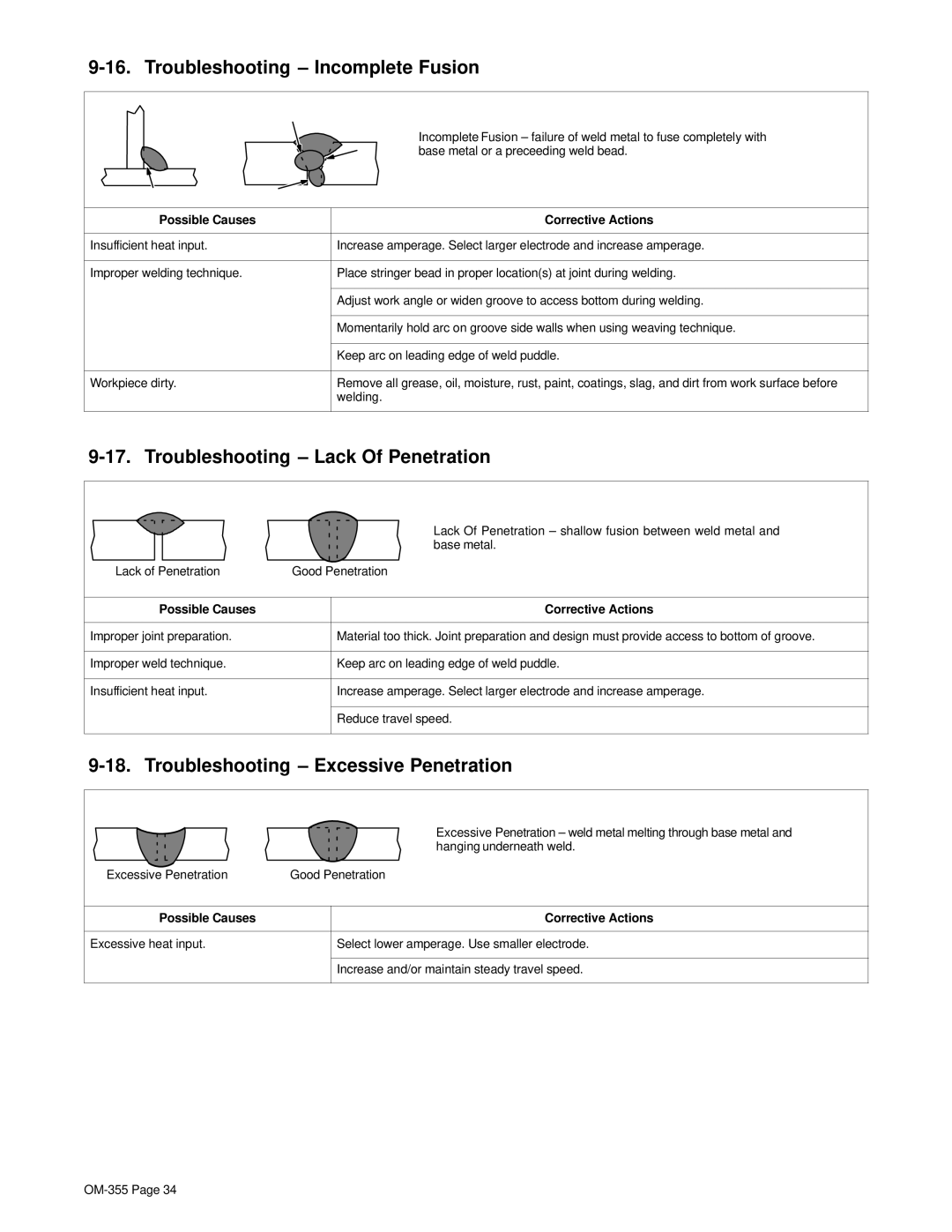
9-16. Troubleshooting – Incomplete Fusion
|
|
| Incomplete Fusion – failure of weld metal to fuse completely with |
|
|
| base metal or a preceeding weld bead. |
|
|
|
|
|
|
|
|
|
|
|
|
|
|
|
|
| Possible Causes |
| Corrective Actions |
|
|
| |
Insufficient heat input. |
| Increase amperage. Select larger electrode and increase amperage. | |
|
|
| |
Improper welding technique. |
| Place stringer bead in proper location(s) at joint during welding. | |
|
|
|
|
|
|
| Adjust work angle or widen groove to access bottom during welding. |
|
|
|
|
|
|
| Momentarily hold arc on groove side walls when using weaving technique. |
|
|
|
|
|
|
| Keep arc on leading edge of weld puddle. |
|
|
| |
Workpiece dirty. |
| Remove all grease, oil, moisture, rust, paint, coatings, slag, and dirt from work surface before | |
|
|
| welding. |
|
|
|
|
9-17. Troubleshooting – Lack Of Penetration
|
|
| Lack Of Penetration – shallow fusion between weld metal and |
|
|
| base metal. |
|
|
|
|
Lack of Penetration | Good Penetration | ||
Possible Causes | Corrective Actions | ||
Improper joint preparation. | Material too thick. Joint preparation and design must provide access to bottom of groove. | ||
Improper weld technique. | Keep arc on leading edge of weld puddle. | ||
Insufficient heat input. | Increase amperage. Select larger electrode and increase amperage. | ||
|
|
| Reduce travel speed. |
9-18. Troubleshooting – Excessive Penetration
| Excessive Penetration – weld metal melting through base metal and |
| hanging underneath weld. |
Excessive Penetration | Good Penetration |
Possible Causes | Corrective Actions |
Excessive heat input. | Select lower amperage. Use smaller electrode. |
| Increase and/or maintain steady travel speed. |
